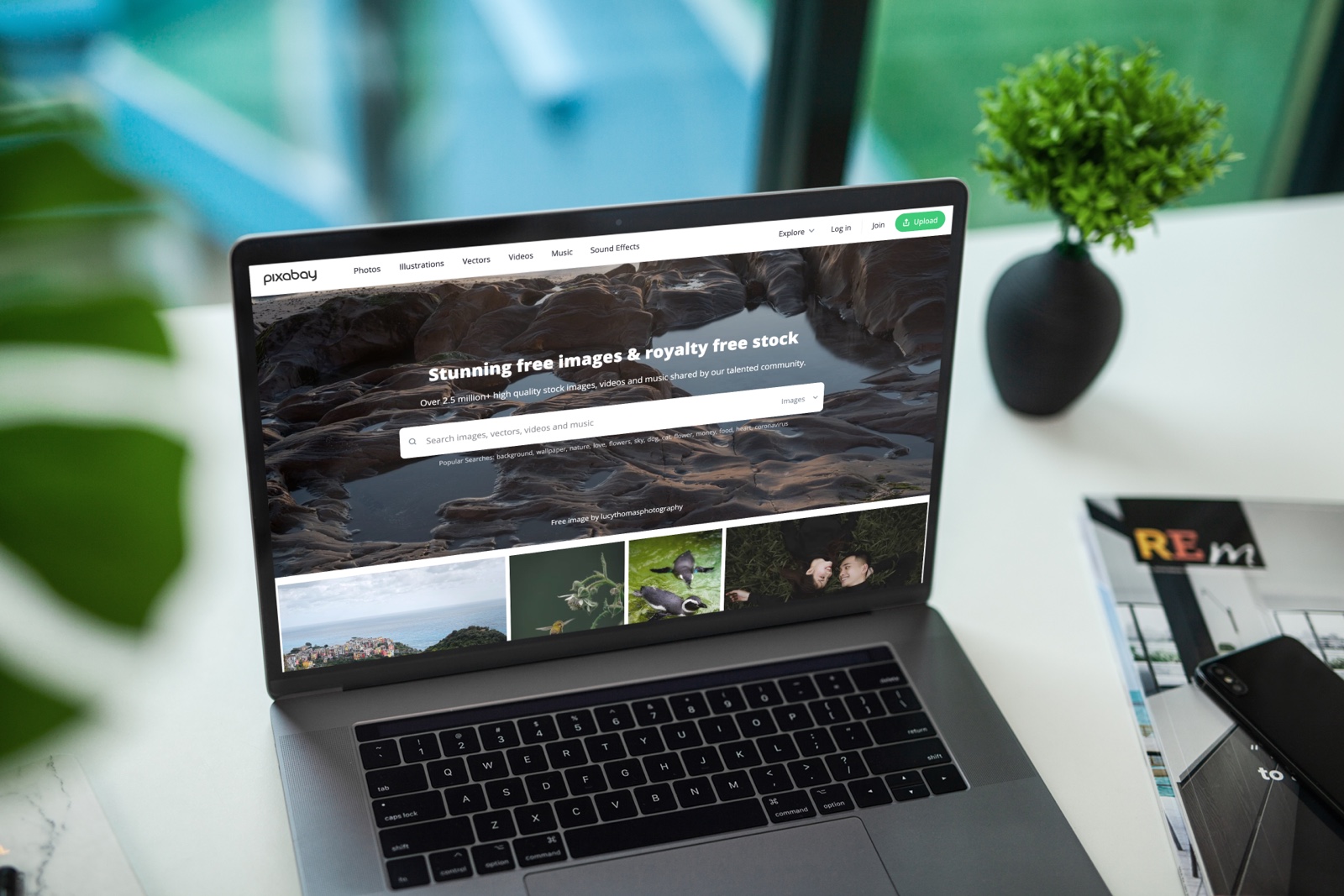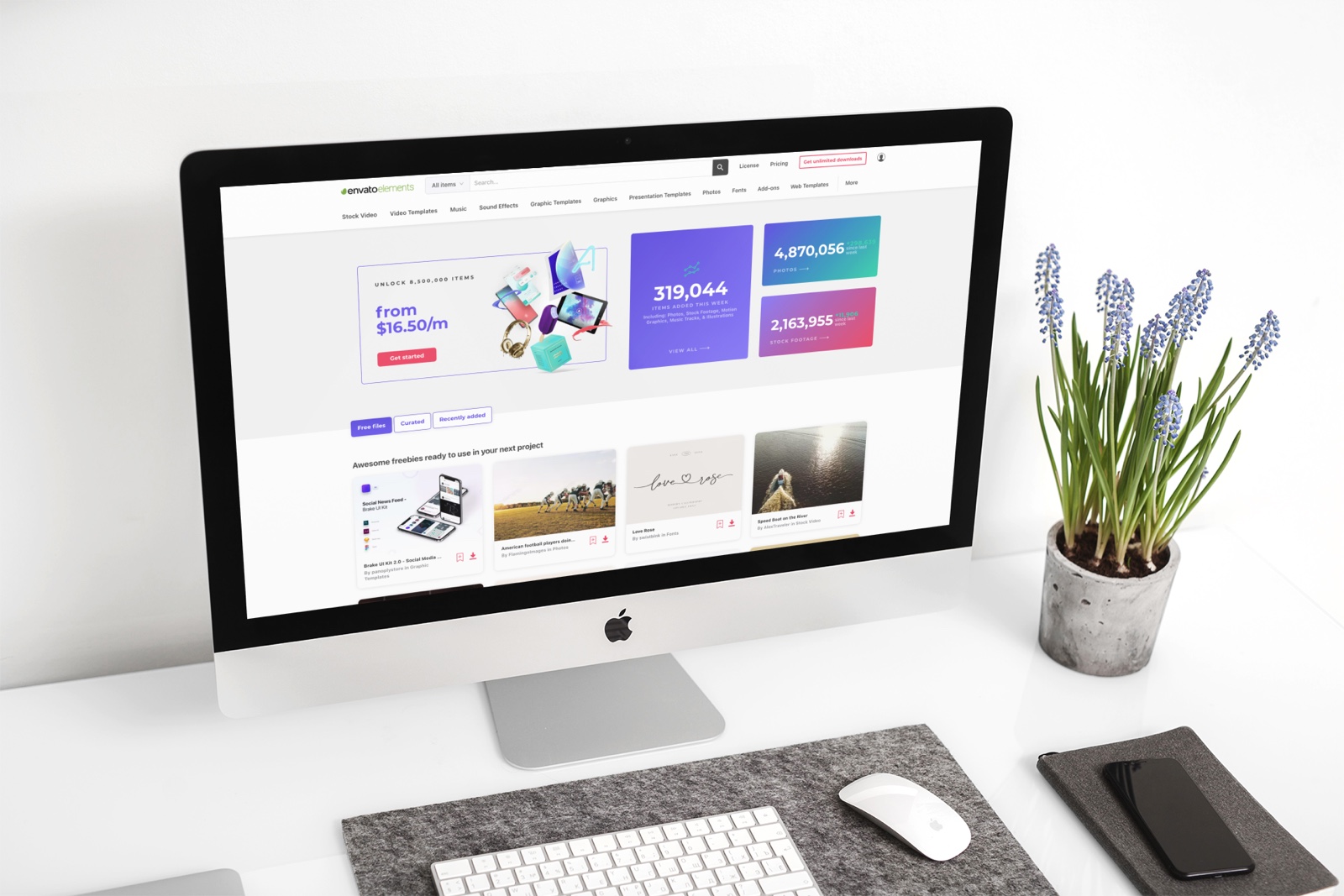- Introduction to Stock Media
- Best Practices for Stock Images
- Free Stock Image Resources
- Paid Stock Image Resources
Introduction to Stock Media
The strategic use of images and graphics can make a huge difference in your website’s visitor experience. Modern website designs tend to make liberal use of large, vibrant photographs to tell a compelling story, communicate an idea, or prompt a visitor to take action.
Professional photography can be expensive. A single photograph can involve tens of thousands of dollars in equipment, lighting and set design, model releases, travel costs, an experienced pro behind the lens, post-shoot editing work, and more. This kind of expense can be prohibitive to small and midsize organizations. So what’s a content author to do?
Stock photography to the rescue. By licensing the use of an image asset to many people, either as a promotional vehicle, or as part of a larger package that has an associated cost, it’s possible to make top-quality photographs and other media accessible to those of us without thousands of dollars to spend.
This article features several free and paid stock image sources that are suitable for commercial use, and outlines a set of best practices that should be a part of your media asset management process.
Best Practices for Stock Images
Before you begin searching for stock images, it’s important to keep a few things in mind, and to take a few precautions to ensure you stay out of trouble.
License Considerations
Contrary to popular belief, you cannot simply take images from external sources (like Google Images) and use them on your website. All photographs, graphics and other image assets are protected by copyright law, and in order to use any asset, you must have permission from the copyright holder.
This permission generally takes the form of a license, which is a legal agreement that stipulates the allowable uses for a given creative asset. Before downloading and using any image, it is essential to understand the license that governs its use.
There are many types of licenses out there – far too many to cover in a brief article like this one. But in general, you want a license that clearly allows for the intended use of the image. For most organizations, this means that the license should clearly permit commercial use. Note that non-profit organizations, churches and other entities that may not necessarily think of themselves as commercial enterprises are still considered as such for the purposes of copyright.
In addition to permitted uses, pay attention to attribution requirements that may also be part of the license. Some licenses allow for commercial use, but also require you to provide visible credit to the copyright holder or original author.
Lastly, some licenses have additional stipulations around how an asset may be used. For example, Pixabay has this clause in its license:
- Don’t portray identifiable people in a bad light or in a way that is offensive.
This means I shouldn’t use a Pixabay photograph of a clearly-identifiable person to advertise an anger management course or a substance abuse program, as these may imply that the subject of the photo has these issues in real life, and would therefore be in violation of the license.
Tracking Image Sources
You should make it a formal practice to record the source of all stock images you use in your content management practice. If the provenance of an asset cannot be clearly established, or if the license terms are missing, you can’t be certain that the asset is being used legally.
This may not be a big problem a week from now, but after a year goes by, or a new content manager steps in to your role, you don’t want to be in a position of being unable to prove the rightful use of the asset.
At Elev8 Web Studio, we recommend storing source, license and/or attribution details in the Description field of the WordPress Media Library. This field is not generally used in most themes, and it’s a great spot to record the Source and License URLs for future reference:
Free Stock Image Resources
The following websites offer the use of high quality photographs and image assets for free, and have licenses (often referred to as royalty-free) that are compatible with commercial usage.
Unsplash
Unsplash offers over 2 million high quality images with a very permissive license. Commercial use is permitted, there are no attribution requirements, and no restrictions on how assets can be used. At Elev8 Web Studio, this site is often the first one we recommend to content managers.

Pexels
Pexels is another great source for royalty-free images, with a similarly permissive license that has no attribution requirements and very few restrictions.

Pixabay
Pixabay boasts over 2.5 million photos, illustrations, videos, music, and sound effects assets, all downloadable for free and available under a commercial-friendly license.

Paid Stock Image Resources
It’s not always possible to source the right asset on the various free stock websites out there. The following websites have a cost associated with the items in their catalog, but still offer highly affordable solutions compared to hiring a photographer, illustrator, or videographer.
Adobe Stock
Adobe is the six hundred pound gorilla in the creative tools space, and Adobe Stock is its premium stock asset catalog. The site uses a credit pricing model, where you purchase a “credit pack” that can then be used to acquire individual assets, each of which is available for a specific number of credits.
When you’re used to getting stock images for free, Adobe’s pricing can seem a bit expensive, but when you evaluate it against the costs of hiring a photographer, it’s still highly cost effective. This is the site you probably want to check after a search for royalty-free assets comes up empty.

Envato Elements
Envato Elements has millions of creative assets, all available for a low monthly subscription fee. Stock photography, illustrations, video, music, sound effects, and even PowerPoint presentation templates.

Shutterstock
Shutterstock is one of the oldest stock photo sites on the web, originally founded in 2003. Its catalog is by far the largest – boasting 370 million items in its collection. The pricing model is a combination of a monthly subscription combined with a fixed number of credits allotted per month. Each asset has a specific credit cost associated with it, and there are several plans available with varying credit allowances. It’s worth noting that unused credits expire at the end of each month, so use ’em or lose ’em.
Some of Shutterstock’s catalog is a bit dated – a reflection of the site’s relatively advanced age. So while the available selection is enormous, you’ll probably have to sift through a lot of stuff to find the right asset. But when all else fails, there’s bound to be something usable.



